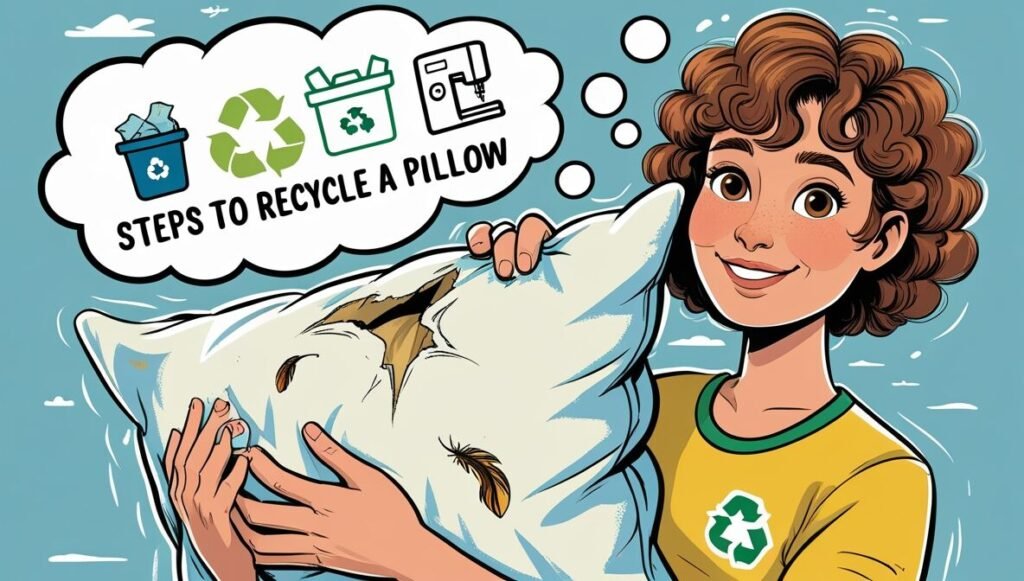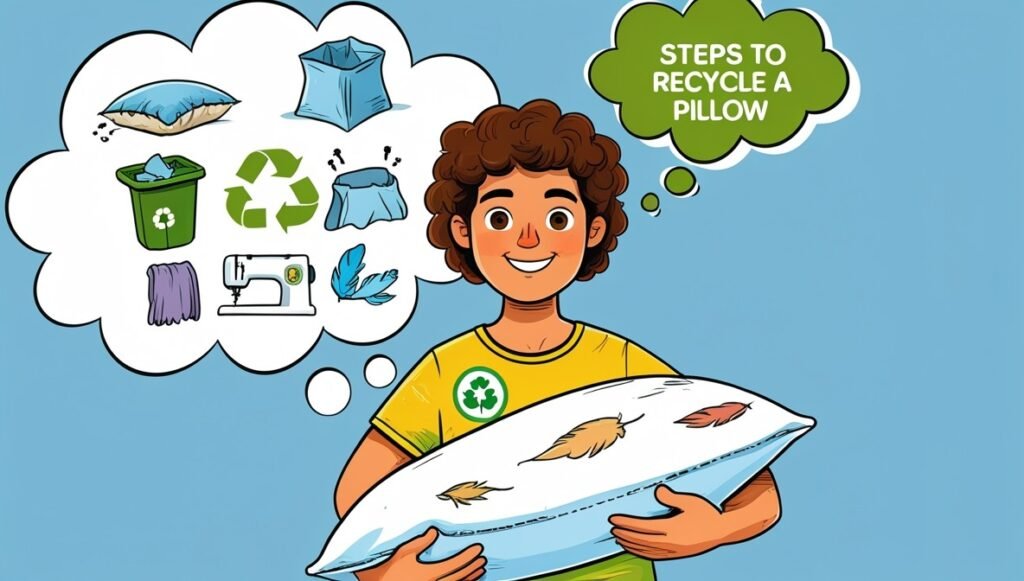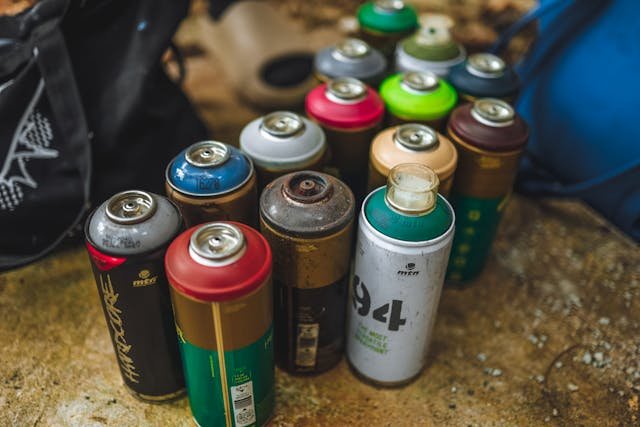If you’ve ever wondered what to do with your old, worn-out pillows, you’re not alone. Pillows accumulate over time, taking up storage space, and when it’s finally time to part ways, they often end up in landfills. Unlike common recyclables, pillows pose unique challenges due to their bulky size and the variety of materials they contain, including feathers, foam, and synthetic fibers.
The good news? There are sustainable, USA-specific options for responsibly disposing of or reusing your old pillows. This guide will explore practical solutions for recycling, repurposing, or donating your unwanted pillows so you can declutter your home while making eco-friendly decisions.

Why Pillows Don’t Belong in Your Curbside Recycling Bin
Many Americans are accustomed to tossing items like paper, plastics, and glass into their curbside recycling bins. Unfortunately, pillows are not as straightforward. Here’s why:
Mixed Materials
Most pillows are made from a combination of synthetic materials like polyester or polyfill, natural elements like feathers or down, and a fabric cover. These diverse components make traditional mechanical recycling more difficult and expensive than standard materials like cardboard or cans.
Contamination Risks
Used pillows can harbor dust mites, allergens, body oils, and even bacteria. These contaminants are harmful when mixed with other recyclables, requiring costly and intensive cleaning processes that general recycling programs cannot accommodate.
Mechanical Challenges
The bulky and soft nature of pillows makes them “tanglers.” They can clog the sorting machinery at Materials Recovery Facilities (MRFs), causing delays and expensive repairs.
Limited Infrastructure
Most municipal recycling services in the USA lack the facilities to process pillows or other textile-like items. This doesn’t mean that pillows are entirely unrecyclable, but special recycling programs or alternative solutions are necessary.
Sustainable Alternatives for Your Old Pillows
Rather than throwing away your pillows, consider these sustainable options:
Donate for Reuse (If in Good Condition)
If your pillows are still clean, free from stains or odors, and structurally sound, donating them is an excellent way to extend their life and help those in need.
Where to Donate:
- Animal Shelters and Humane Societies
Animal shelters frequently use pillows as bedding for dogs, cats, and other animals. Make sure to check with your local shelter for specific donation policies. - Homeless Shelters and Charities
Many homeless shelters do not accept used pillows because of hygiene concerns. However, some may take new or nearly new pillows. Always call ahead to confirm. - Community Drives
Local organizations, churches, or neighborhood initiatives might organize collection drives for gently used household items, including pillows. These events often benefit families in need. - Thrift Stores (with Exceptions)
Major chains like Goodwill and Salvation Army typically do not accept used pillows due to hygiene regulations. Still, some independent stores or local resale shops might.
Pro Tip: Use search terms like “donate pillows near me” or “animal shelters near me” to locate organizations that accept pillow donations.
Repurpose and Upcycle for Practical Use
Pillows that are too old or unsanitary for donation can still serve a purpose around the home. Repurposing your pillows is a creative and cost-effective way to reduce waste.
Creative Upcycling Ideas:
- Pet Beds: Turn the stuffing or entire pillow into a bed for your pets. It’s a cozy, low-cost way to keep your furry friends comfortable.
- Draft Stoppers: Use pillow batting or filler to create draft stoppers for windows and doors, improving home energy efficiency in colder months.
- Floor Cushions or Poufs: Revive old floor cushions with fresh fabric and pillow stuffing to create extra seating in your living space.
- Gardening Kneelers: Repurpose pillows as padding to make gardening more comfortable.
- Packing Material: Shredded foam or polyfill works well as cushioning material for packing and shipping fragile items.
- Cleaning Rags: Cut cotton or synthetic pillow shells into reusable cleaning cloths.
- Composting Natural Fillings: Feathers, cotton, wool, and buckwheat hulls can break down naturally in a compost pile! Be sure to remove any synthetic materials first.
By finding new uses for your pillows, you can save money and reduce the environmental impact of waste.
Explore Specialized Recycling Programs
While not yet widely available, a few growing initiatives specialize in pillow and textile recycling.
Examples of Specialized Options:
- Take-Back Programs: Some mattress companies, such as Mattress Firm or eco-friendly bedding brands, offer take-back initiatives for old pillows when you purchase new ones.
- Textile Recycling Centers: Look for local facilities that accept household textiles. These centers may dismantle pillows to separate and process individual components like foam or batting.
- TerraCycle: While not specific to pillows, TerraCycle’s programs handle hard-to-recycle items, including textiles, for a fee. Check their website for current options.
Using online searches like “bedding recycling” or “foam recycling centers USA” can help locate these niche opportunities in your region.
When Recycling Isn’t an Option
Sometimes, recycling or repurposing a pillow isn’t practical. If all else fails, disposing of pillows responsibly is the last resort.
Tips for Disposal:
- Minimize Volume: Compress or cut up the pillow to reduce space in the trash bag.
- Check Local Guidelines: Some cities have bulk pick-up days or specific guidelines for managing large household items.
- Avoid Fly-Tipping: Always dispose of pillows legally to prevent environmental harm or fines.

When to Replace Your Pillows (And Why)
Knowing when to replace your pillows is just as important as finding sustainable ways to dispose of them.
Hygiene & Health
Over time, pillows can harbor dust mites, dead skin cells, and allergens. Using an old pillow might impact your health, especially if you have asthma or allergies.
Support & Comfort
Pillows lose their loft and structural integrity, leading to poor neck alignment and reduced sleep quality. Investing in a perfect pillow every few years ensures peaceful and healthy sleep.
Replacement Guidelines:
- Replace synthetic pillows every 1-2 years.
- More durable types, like memory foam or down pillows, can last up to 3 years with proper care.
Conclusion
While traditional pillow recycling is limited, there are many ways to responsibly deal with unwanted pillows. Donation, creative repurposing, and locating niche recycling programs can make a big difference. By taking simple yet impactful steps, you can avoid sending bedding waste to landfills and contribute to a more sustainable future.
Take action today! Start decluttering your bedding and explore these eco-friendly methods to reduce waste, protect the environment, and maintain a comfortable home. Responsible pillow disposal isn’t just good for your space; it’s good for the planet!
Can I put memory foam pillows in curbside recycling?
Memory foam pillows are not accepted in curbside recycling. However, some specialized centers process foam materials, and repurposing is a common alternative.
Do Goodwill or Salvation Army accept used pillows?
Typically, no. Used pillows are considered a hygiene risk. Call ahead to confirm donation policies if they’re nearly new.
Can down or feather pillows be recycled?
Yes, in part. Natural down or feathers can be composted under the right conditions. Yet, due to limited infrastructure, most down pillows are disposed of or reused.
Can shredded foam from pillows be recycled?
Pure foam can sometimes be accepted by foam recycling centers. Otherwise, it’s better to repurpose shredded foam as filling for cushions or padding.
What’s the best way to dispose of a heavily soiled pillow?
For pillows that can’t be cleaned or salvaged, removal is the last option. Use them as packing or craft materials first if possible, then place them in household trash.

Anamika is a passionate writer for Eco365Store.com, specializing in topics that inspire a cleaner, greener world. With expertise in home cleaning, recycling, and eco-friendly solutions, she crafts engaging and informative articles that help readers adopt sustainable practices in their daily lives.

